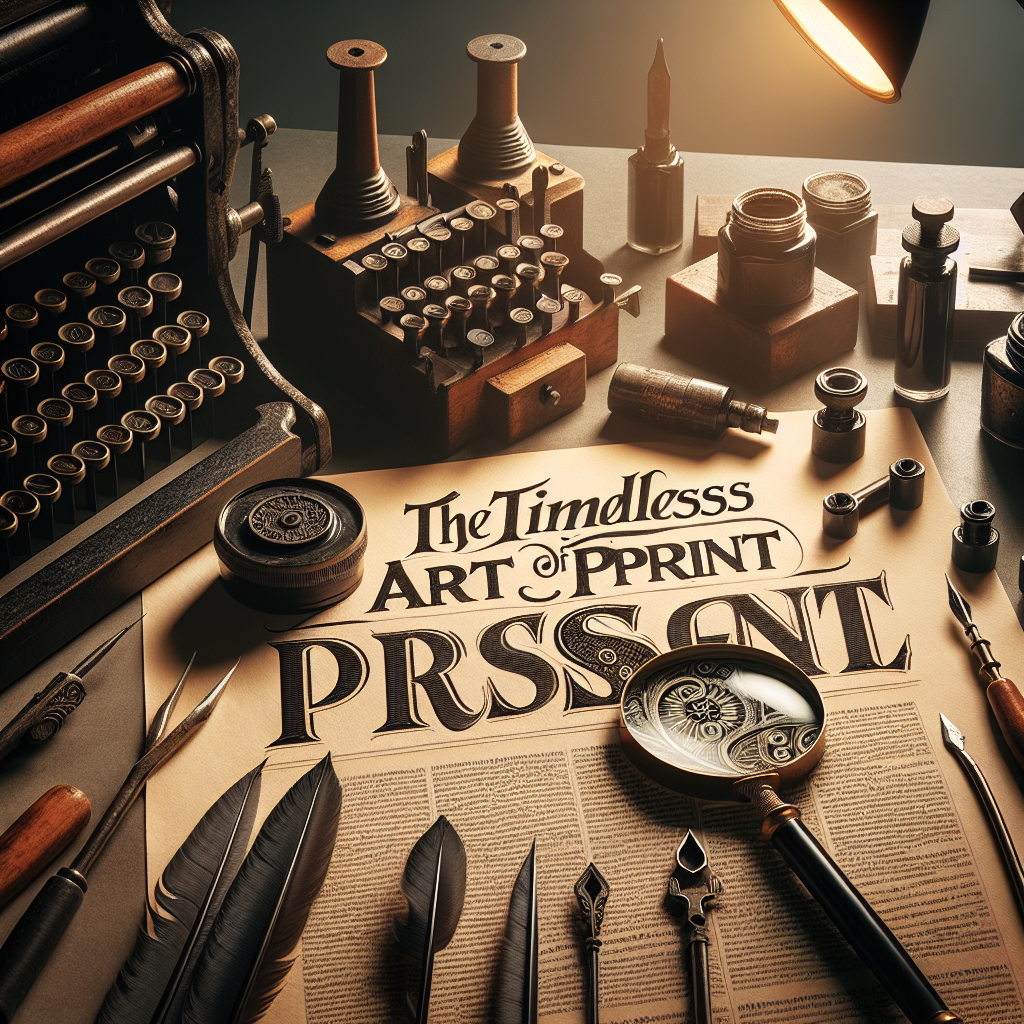The world of design has seen many changes over the course of history, but one of the few things that has remained consistent is the art of print design. Despite the surge of digital technologies and the transformation of graphic design into a predominantly digital area, print design remains a core skill that every designer should be well-versed in.
Print design, as some may think, is not a remnant from a bygone era. It is a dynamic and evolving field that continually grows and changes with the times. It involves creating visuals, graphics, layouts, and designs that are printed onto a physical surface, such as paper, cardboard, polyester and other materials. The applications of print design are varied and encompass a wide array of items like business cards, brochures, invitations, posters, letterheads, and packaging designs.
There are a multitude of principles that guide the art of print design. For starters, a strong understanding of typography is essential in designing a compelling printed work. Knowing how to balance and navigate different typefaces, type sizes, and line lengths is key to creating a design that is visually pleasing and easy to read.
Balance is another crucial principle in print design. This refers to the distribution of elements within a design. Symmetrical designs can convey a sense of stability and formality, while asymmetrical designs can evoke feelings of dynamism and liveliness. Balance also involves the proper use of white space, which can help to highlight key elements within a design, making the overall composition more engaging.
In addition, color plays a vital role in print design. Understanding color theory is crucial in order to evoke the right emotions and reactions from your audience. Colors can be used to create contrast, to guide the viewer’s eye to certain points, and to communicate certain feelings or ideas.
Paper quality, too, is an integral part of print design. The feel, weight, and texture of the paper can greatly affect the overall impact of the design. As such, it’s important for designers to be knowledgeable about various types of paper and materials available.
Today, print design is complementing digital design more than ever. They can work together to provide a more cohesive and engaging customer experience. A well-designed printed piece can create a memorable physical connection between the brand and the consumer. In addition, many designers find that the constraints of print design, such as physical size or the limitations of ink, can foster creativity and originality.
While we are increasingly moving to a more digital world, the art of print design is not going away. Rather, it’s adapting and evolving to work in conjunction with digital design. It remains an important skill that designers need to master in order to produce work that is both aesthetically pleasing and functional.
Conclusion
In conclusion, the art of print design is timeless and still holds a significant role in our increasingly digital world. It’s an art that requires a strong understanding of design fundamentals, careful attention to detail, and a deep appreciation for physical materials. Despite the rapid changes in the world of design, the art of print design will continue to endure and thrive.
FAQ
- Q1: Is print design still relevant today?
A1: Absolutely! Even in our digital-focused world, print design continues to remain relevant and important. It provides a vital physical marketing medium that enhances consumer engagement.
- Q2: Why is typography important in print design?
A2: Typography is important in print design as it greatly affects readability and audience perception. Different typefaces communicate different emotions and ideas, making it crucial for conveying the intended message.
- Q3: What is the role of color in print design?
A3: Color plays a crucial role in creating visual interest and guiding viewer’s attention. It also helps to communicate brand identity and evoke certain emotions or reactions.
- Q4: What is the importance of paper quality in print design?
A4: Paper quality affects the overall look and feel of the design. Different types of paper can result in different print qualities and textures, making it an important component of the design process.
- Q5: How can print design complement digital design?
A5: Print design can enhance digital design by providing a physical experience that can’t be achieved digitally. They can also work together to provide a more cohesive and engaging customer experience.

